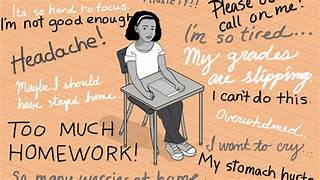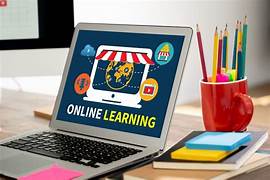The Rise of Personalized Learning in Schools
Have you ever wondered why some students excel in traditional classrooms while others struggle to keep up? The conventional one-size-fits-all approach to education often leaves many learners behind. This is where personalised learning steps in—a transformative model of education tailored to meet each student’s unique needs, interests, and abilities.
Personalised learning is gaining momentum as schools adapt to a rapidly changing world where technology, individualisation, and flexibility are more important than ever. Imagine a classroom where every student follows a learning path designed just for them, with technology acting as a supportive guide rather than a replacement for teachers. It’s a system that empowers students, giving them ownership of their education, and ensures that every child, regardless of their starting point, can achieve success.
This approach isn’t without challenges, though. Resource limitations, teacher training, and balancing personalised strategies with national standards are hurdles that schools must overcome. Yet, the benefits—enhanced engagement, improved outcomes, and greater inclusivity—far outweigh the difficulties. In this article, we’ll explore what personalised learning is, why it’s revolutionising education, and how schools can effectively implement it to shape the future of learning.
What is Personalized Learning?
Personalised learning is a student-centred approach where teaching methods, content, and pace are tailored to the individual learner. Unlike traditional teaching models that treat all students the same, personalised learning acknowledges that every child is unique, with their own strengths, weaknesses, and interests.
This approach focuses on:
- Individual Learning Plans: Creating specific objectives and tasks for each student.
- Flexible Pacing: Allowing students to move ahead or revisit topics as needed.
- Student Autonomy: Encouraging learners to take an active role in setting their goals and tracking their progress.
Think of it like a GPS for education. Instead of following one fixed route, students have multiple paths to reach their destination, adjusting based on their pace and preferences.
The Role of Technology in Personalized Learning
Technology plays a vital role in making personalised learning feasible and effective. It provides the tools to customise education at scale and ensures that every student’s needs are addressed.
Key Technological Tools
- Learning Management Systems (LMS): Platforms like Moodle and Google Classroom allow teachers to assign tasks, monitor progress, and provide feedback.
- Adaptive Software: Tools like Khan Academy and DreamBox adjust content difficulty in real-time, ensuring students are always appropriately challenged.
- AI Assistants: AI-powered systems offer instant support and resources, acting like a virtual tutor for students.
These tools not only enhance the learning experience but also provide educators with data-driven insights to make informed decisions about teaching strategies.
Benefits of Personalized Learning
Why is personalised learning becoming so popular? Because it works—and here’s why:
Engagement
Students are more engaged when their education feels relevant and tailored to their interests. This active involvement leads to better participation and enjoyment.
Improved Outcomes
Research shows that personalised learning improves academic achievement, helping students master concepts at their own pace without feeling rushed or held back.
Skill Building
Beyond academics, personalised learning fosters critical thinking, problem-solving, and time management—essential skills for the real world.
Inclusivity
Personalised strategies accommodate students with diverse needs, ensuring that every learner has an equal opportunity to succeed regardless of their abilities.
Challenges in Implementing Personalized Learning
Despite its many benefits, personalised learning isn’t without its challenges. Schools face several obstacles when trying to adopt this model:
Resource Constraints
Not all schools have the funds or access to the technology needed for personalised learning. This digital divide can leave some students and educators at a disadvantage.
Teacher Training
Educators must adapt to new tools, technologies, and teaching methods. Proper training and ongoing support are critical for success.
Balancing Standards
While personalisation is key, schools must also ensure that students meet national education standards, which can sometimes conflict with individualised approaches.
Overcoming these challenges requires commitment, innovation, and collaboration among educators, administrators, and policymakers.
Examples of Successful Implementation
Some schools have already embraced personalised learning with incredible results:
Summit Public Schools (United States)
Summit has implemented a fully personalised learning model where students work on self-directed projects, supported by mentors and teachers.
Shireland Collegiate Academy (United Kingdom)
Shireland uses blended learning to combine traditional classroom instruction with digital tools, allowing students to learn at their own pace.
These examples highlight that with the right resources and strategies, personalised learning can dramatically improve educational outcomes.
The Future of Personalized Learning
As technology evolves, so does the potential for personalised learning. Emerging innovations like artificial intelligence, virtual reality, and big data analytics are set to revolutionise the classroom.
Imagine VR headsets transporting students to historical landmarks or AI systems predicting learning gaps before they occur. The future of education is not just personalised—it’s immersive and dynamic. To prepare, schools must invest in infrastructure, training, and forward-thinking policies.
How Parents and Teachers Can Support Personalized Learning
Both parents and teachers play a vital role in ensuring the success of personalised learning.
For Parents
Parents can:
- Stay involved in their child’s education by exploring personalised tools and apps.
- Communicate regularly with teachers to track progress.
- Encourage self-directed learning at home.
For Teachers
Educators should:
- Embrace flexibility in lesson planning.
- Use technology to support individual learning needs.
- Provide ongoing feedback and adapt based on student performance.
When parents and teachers work together, personalised learning becomes more impactful and effective.
Conclusion
Personalised learning is reshaping education, making it more inclusive, engaging, and adaptable to individual needs. While challenges exist, the benefits far outweigh the drawbacks. By leveraging technology, fostering collaboration, and embracing innovation, schools can create a learning environment where every student thrives. The future of education is personalised—and it’s already here.
FAQs
- What is personalised learning?
It’s a student-focused approach that tailors teaching methods and content to each learner’s needs, interests, and pace. - How does technology enable personalised learning?
Technology provides tools like adaptive software, learning platforms, and AI tutors to customise education effectively. - What are the main benefits of personalised learning?
Benefits include increased engagement, improved outcomes, inclusivity, and essential skill-building. - What challenges do schools face with personalised learning?
Key challenges include resource constraints, teacher training, and balancing personalisation with curriculum standards. - How can teachers adopt personalised teaching methods?
By leveraging technology, embracing flexibility, and focusing on continuous assessment and feedback. - Does personalised learning require technology?
While technology enhances it, personalised learning can also use creative, non-digital strategies. - What does the future hold for personalised learning?
Emerging technologies like AI and VR are set to make learning even more tailored, immersive, and effective.






